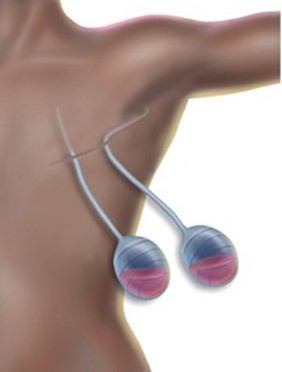A nurse is planning care for a client who has a central venous access device for intermittent infusions.
Which of the following actions should the nurse include in the plan of care?
Use an aseptic technique when changing the dressing.
Cleanse the site with povidone-iodine.
Flush the catheter using a 10-mL syringe.
Change the dressing every 24 hours.
The Correct Answer is A
The aseptic technique is important to prevent infection when changing the dressing of a central venous access device.
Choice B is not correct because povidone-iodine is not always the recommended cleansing agent for central venous access devices.
Choice C is not correct because a 10-mL syringe may generate too much pressure and damage the catheter.
Choice D is not correct because the dressing does not always need to be changed every 24 hours; the frequency of dressing changes depends on the type of dressing and the condition of the site.
Nursing Test Bank
Naxlex Comprehensive Predictor Exams
Related Questions
Correct Answer is D
Explanation
“I should expect less than 25 mL of secretions per day in the drainage devices.” After a mastectomy with breast reconstruction using a tissue expander, you may go home with drains in your chest to remove extra fluid.

Choice A is wrong because performing strength-building arm exercises using a 15-pound weight is not recommended.
Choice B is wrong because waiting 2 months before additional saline can be added to the breast expander is not accurate.
Choice C is wrong because keeping the left arm flexed at the elbow as much as possible is not recommended.
Correct Answer is B
Explanation
A client reports having a fever, night sweats, and cough for 2 days.
These symptoms are associated with infectious diseases such as tuberculosis.
In order to prevent the spread of infection to other patients, this client would require a private room.
A client with diabetes mellitus and acute ketoacidosis does not require a private room based on their diagnosis.
C)A client with a compound fracture of the right femur does not require a private room based on their diagnosis.
D)An older adult client with aspiration pneumonia does not require a private room based on their diagnosis.
Whether you are a student looking to ace your exams or a practicing nurse seeking to enhance your expertise , our nursing education contents will empower you with the confidence and competence to make a difference in the lives of patients and become a respected leader in the healthcare field.
Visit Naxlex, invest in your future and unlock endless possibilities with our unparalleled nursing education contents today
Report Wrong Answer on the Current Question
Do you disagree with the answer? If yes, what is your expected answer? Explain.
Kindly be descriptive with the issue you are facing.
